Intel B560 is a Disaster: Huge CPU Performance Differences and a Power Limit Mess
I've been testing a ton of Intel Z590 motherboards recently for VRM thermal performance and this has allowed me to take a look at how each board is configured out of the box. For the most part, Z590 motherboards run Intel 11th-gen processors without any enforced power limits, which is perfectly fine and within the loosely defined Intel specification.
I've found that Z590 motherboards from Asus, MSI and Gigabyte all run without power limits, or at least limits that will heavily restrict the performance of parts like the Core i9-11900K. Depending on the motherboard the 11900K will boost to, and maintain, an all-core frequency of 4.7 to 4.8 GHz.
However, Asrock follows the Intel base spec, commonly referred to as the "TDP specification." What that means is the 11900K will boost up to 4.8 GHz for a period of up to 56 seconds before dropping down to 4.3 GHz, where it runs at a package power of 125 watts. In other words, for sustained core-heavy workloads, Asrock Z590 motherboards will clock 11th-gen CPUs around 10% lower than boards from competing brands.
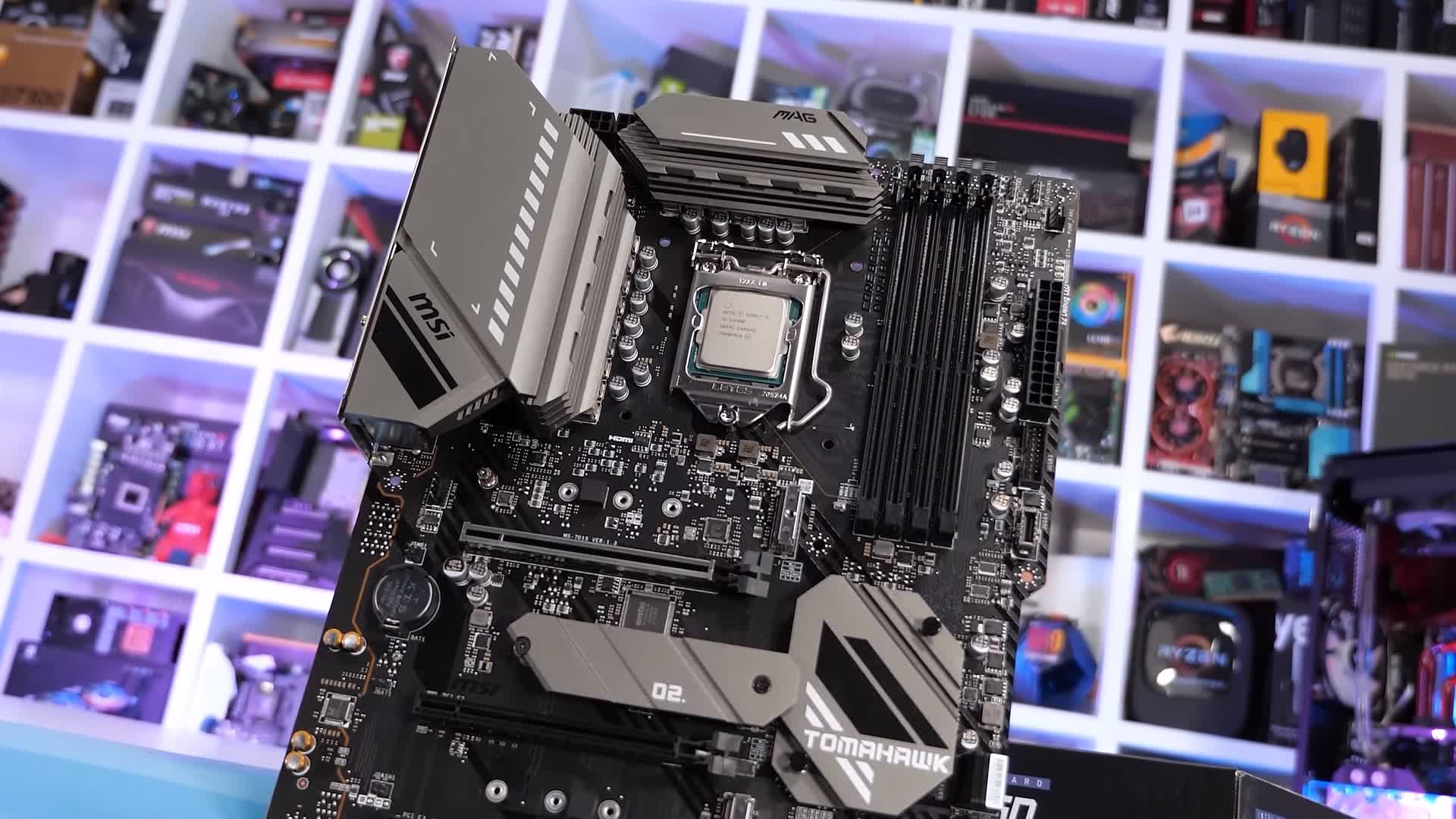
Still, Asrock isoperating within the Intel spec, they just happen to be using the minimum specification, whereas Asus, MSI and Gigabyte are maxing that out. It's not great, but at the end of the day, we're only talking about a ~10% frequency discrepancy for sustained workloads and in real-life scenarios, that should typically account to little or nothing in today's games.
However, the focus of today's article is not Z590 motherboards, but rather Intel's B560. These new B-series motherboards make a lot more sense than before on paper. They're now enabled for memory overclocking and with K-SKU processors being somewhat pointless due to the limited overclocking headroom, locked parts like the i5-11400 offer the most value and therefore make the most sense.
There's little point pairing a locked Intel CPU with a Z-series motherboard, especially at a price premium, so I decided to shift my focus towards finding the best value B560 boards... and what a frustrating journey that is proving to be.
I've found testing Intel B560 boards so frustrating that I had to stop testing to write this article, warning readers of the possible pitfalls when buying one such board. What I've discovered is quite alarming and something all potential Intel buyers need to be made aware of.
Depending on the B560 motherboard, performance of locked 65 watt parts like the 11400 and 11700 can be negatively impacted by over 30%. That's right, we're not talking about parts like the Core i9-11900K, but rather processors you will be using with a budget B560 motherboard.
Prior to this testing, the only B560 board that I had looked at was the MSI B560 Tomahawk which we used to review and benchmark the 11400F for our review. Performance was identical to Z590 boards I'd tested from the likes of Asus, MSI and Gigabyte. MSI even told me it was to be expected that B560 motherboards would offer the same level of performance as their Z590 counterparts, but it turns out that's not always the case. Far from it.
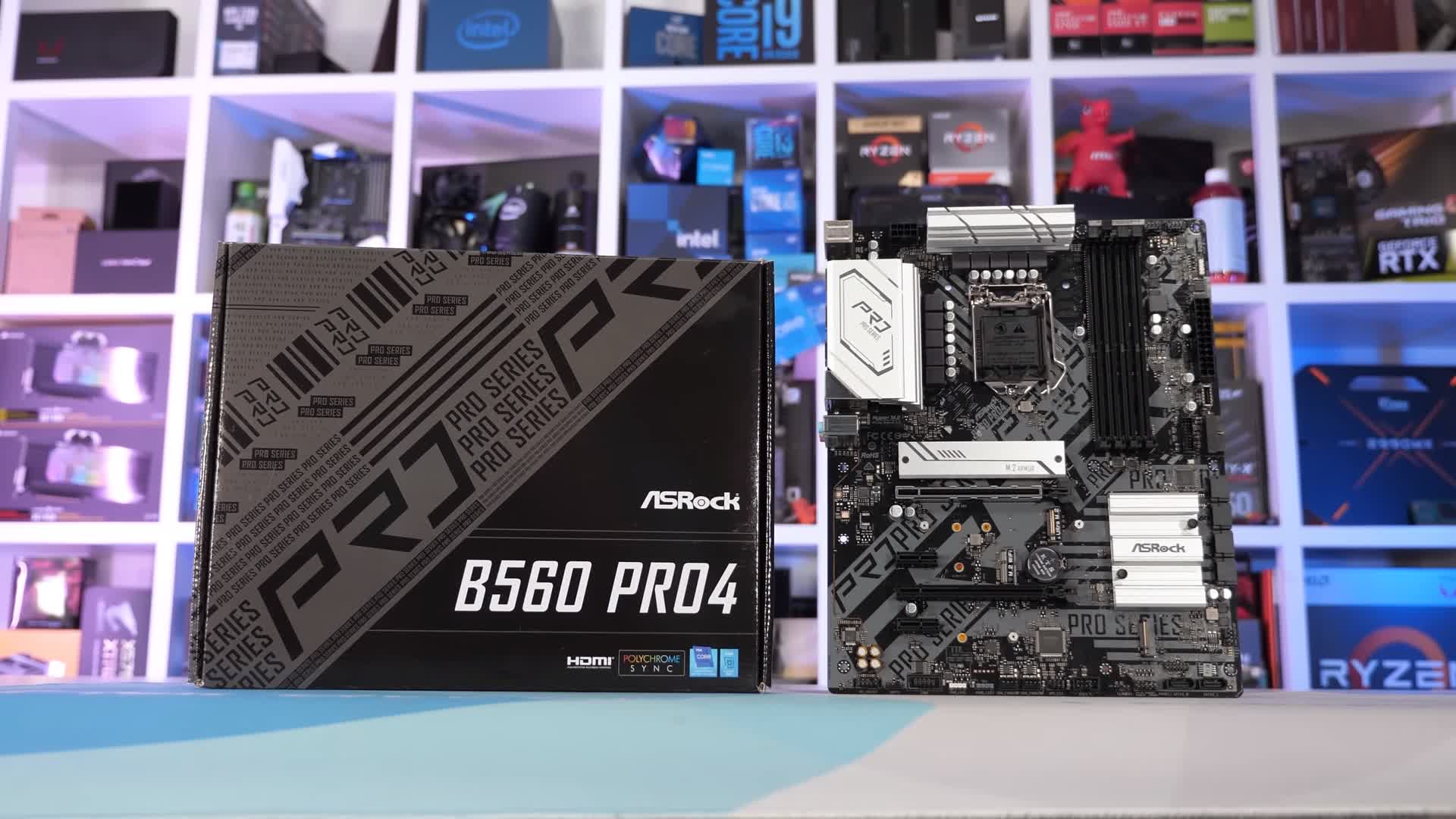
Using the MSI B560 Tomahawk, the 11400F sustained the same 4.2 GHz all-core frequency that we saw on the Z590 boards, and therefore performance remained the same. However, the Tomahawk is a $200 B560 motherboard, which is not inexpensive, and therefore the results were as expected. I also tried out the Gigabyte B560M Aorus Pro AX ($180) which again mirrored the performance previously seen with the Z590 boards.

But because we were looking for the best budget motherboards, we wanted to see how well the cheaper boards handled parts like the i5-11400 and i7-11700. After all, you can run a Ryzen 9 5950X without any performance restrictions on $110 AMD B550 boards like the Gigabyte B550M DS3H and MSI B550M Pro-VDH WiFi, for example.
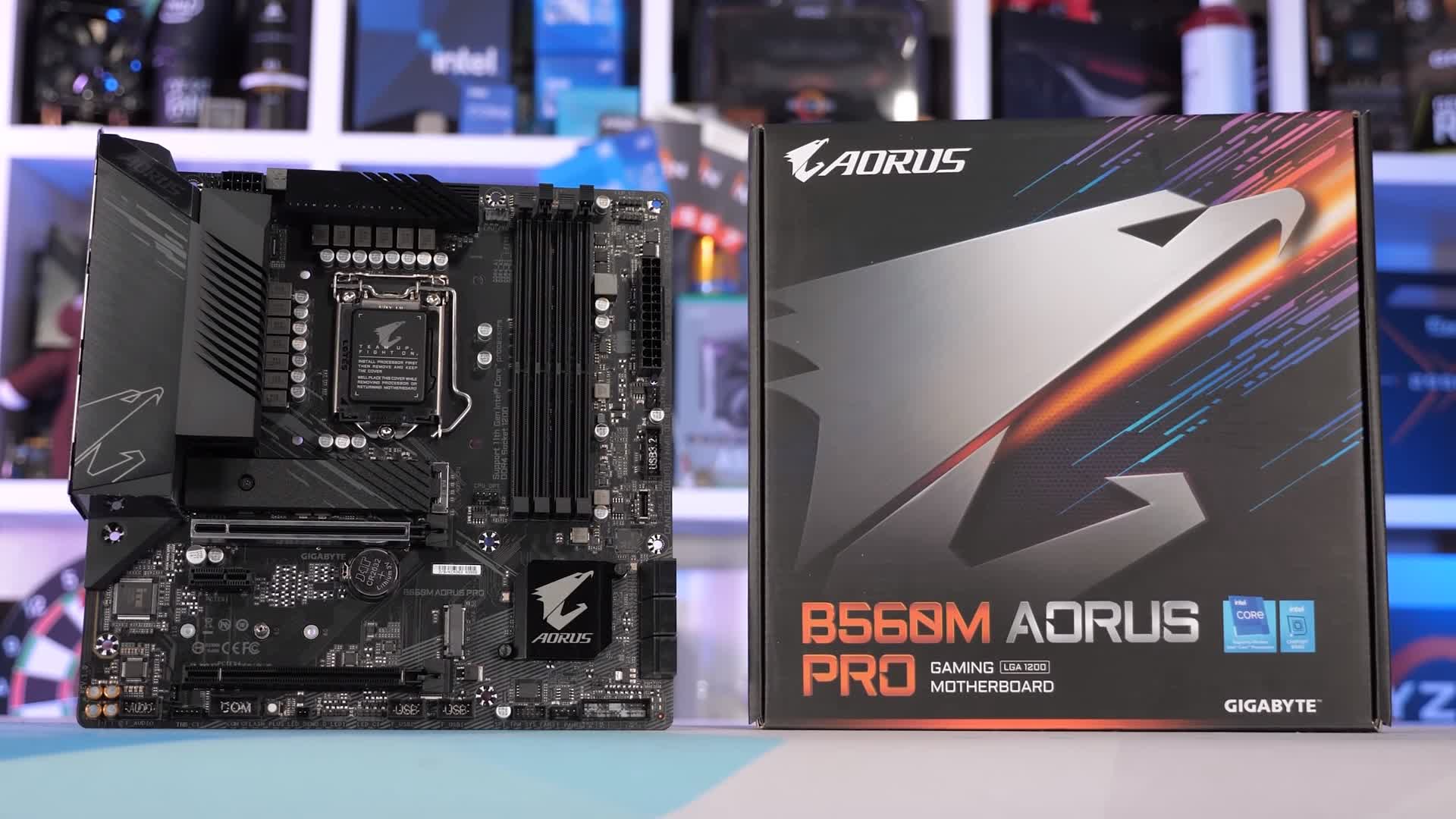
So I went out and purchased the Asrock B560 Pro4 which costs $125. I also have the MSI B560M Pro which should be priced closer to $100, and the Gigabyte B560M DS3H AC, which is another basic board but we haven't seen in retail yet.
We fully expect entry-level Intel B560 boards to be able to run parts like the Core i9-11900K with power limits in place (125 watt TDP spec), and of course, the motherboards are listed to officially support the Core i9 part. What I wasn't entirely sure about was how they would configure 65w parts like the Core i5-11400F, but I did expect that it would be possible to run the 6-core locked processor without power limits to achieve maximum performance, and technically it is.
Core i5-11400 Test: Cinebench and SoTR
Here's a look at how these motherboards perform out of the box using the Core i5-11400F. The $200 Tomahawk and $180 Aorus Pro AX perform as expected, delivering a score of roughly 10,000 points in Cinebench R23.
Both sustain an all-core frequency of 4.2 GHz out of the box. It's also worth noting that this frequency is sustained indefinitely as long as there's sufficient CPU cooling, and we see that after 30 minutes of looping the multi-core test the score remained much the same.
The more affordable Asrock B560 Pro4, Gigabyte B560M DS3H AC and MSI B560M Pro all enforce the 65 watt TDP limit by default, but that doesn't mean the same thing for all boards. Due to slight variations in voltage tuning and efficiency of the board's VRM, the all-core frequency varies within that 65w envelope.
The Asrock B560 Pro4, for example, ran the 11400F at 3380 MHz. That means the Tomahawk and other B560 boards that don't enforce power limits are clocking the processor 24% higher out of the box. But the Pro4 wasn't the worst of the bunch. The MSI B560M Pro clocked even lower at just 3100 MHz, more than 1 GHz lower than the Tomahawk which clocked 35% higher. Then we have the Gigabyte B560M DS3H AC which maintained an all-core frequency of 3500 MHz, or 13% higher than the MSI B560M Pro.
Put differently, in all-core workloads the B560 Tomahawk is 27% faster than the B560M Pro, or worse. The clock frequencies just mentioned were recorded at the end of the 30 minute stress test. So if we ignore the first run where the B560 boards aren't running the entire test at the PL1 power state and look at the result recorded after 30 mins of looping the test, we see that the B560 Tomahawk is actually 35% faster than the B560M Pro.
That's a huge performance difference. We're talking about a different tier of CPU performance, the kind of difference you'd normally expect when upgrading from a 6 to an 8-core CPU of the same architecture, for example.
For those of you focused purely on gaming, the difference isn't as significant, at least in most games that don't max out the 11400F. Testing with Shadow of the Tomb Raider we see a 12% performance uplift from the B560M Pro to the Tomahawk. That's still a reasonable difference, but not close to the 35% margin we saw in Cinebench.
It is possible to remove the power limits and unleash the 11400F on these entry-level B560 boards. How you go about doing this depends on the motherboard, some are easier than others. In the case of the MSI B560M Pro you simply change the cooler option in the BIOS from 'box cooler' to 'water-cooling' and provided you have a sufficient cooler, the CPU will boost up to 4.2 GHz for all-core workloads.
You might be thinking, if that's the case, what's the big deal then? With the Core i5-11400F it's more of a nuisance than anything, and it will catch out inexperienced users who will struggle to work out why their system isn't performing as claimed by reviewers and other users running better boards.
It's a bit messy, but it'll get much worse should it come time to upgrade. The next logical step for those seeking a little extra processing power would be a locked version of the Core i7-11700, and this is where things go very wrong...
Core i7-11700 Test: Cinebench and SoTR
The Tomahawk and Aorus Pro run the 11th-gen processor without power limits, clocking the 11700 to 4.4 GHz, which allowed for a score of just over 14,000 pts.
The cheaper B560 boards weren't nearly as impressive though. The Gigabyte B560M DS3H AC dropped the clock frequency in this test to 3180 MHz, then the Asrock B560 Pro4 sustained just 3155 MHz, and the MSI B560M Pro was the worst at just 2890 MHz.
Incredibly, that means that for a sustained workload which sees Cinebench loop for 30 minutes, the Tomahawk was 43% faster than the B560M DS3H AC and 44% faster than the Asrock B560 Pro4, that's nuts. If you were to buy the MSI B560 Tomahawk with the Core i7-11700, rather than the MSI B560M Pro, you'd have done well, gaining 53% more performance out of the box.
Testing gaming performance proves less demanding but this will vary on the title. In this example, the Tomahawk is 14% faster than the MSI B560M Pro, 9% faster than the Asrock B560 Pro4, and 8% faster than the Gigabyte B560M DS3H AC.
If we remove the power limits and allow the Core i7-11700 to run at full speed, just as we did with the Core i5-11400F, things don't go to plan and this time we run into a show stopper, motherboard VRM performance, the very thing I set out to test...
The MSI B560M Pro can handle a package power of 125 watts fairly well, but going beyond that sees the board run into trouble, forcing it to throttle the CPU to avoid catastrophe. Without power limits, the i7-11700 pushes package power to around 140 watts, depending on the level of voltage used by the board.
Removing the power limits on the B560M Pro with the i7-11700 installed resulted in VRM thermal throttling, and while this still saw the average clock speed raised to 3.8 GHz – a 900 MHz boost there – frequent dips to 800 MHz when throttling makes for a horrible experience. It also means, even if we ignore the VRM throttling issue, the 11700 still clocks 16% higher on boards like the Tomahawk.
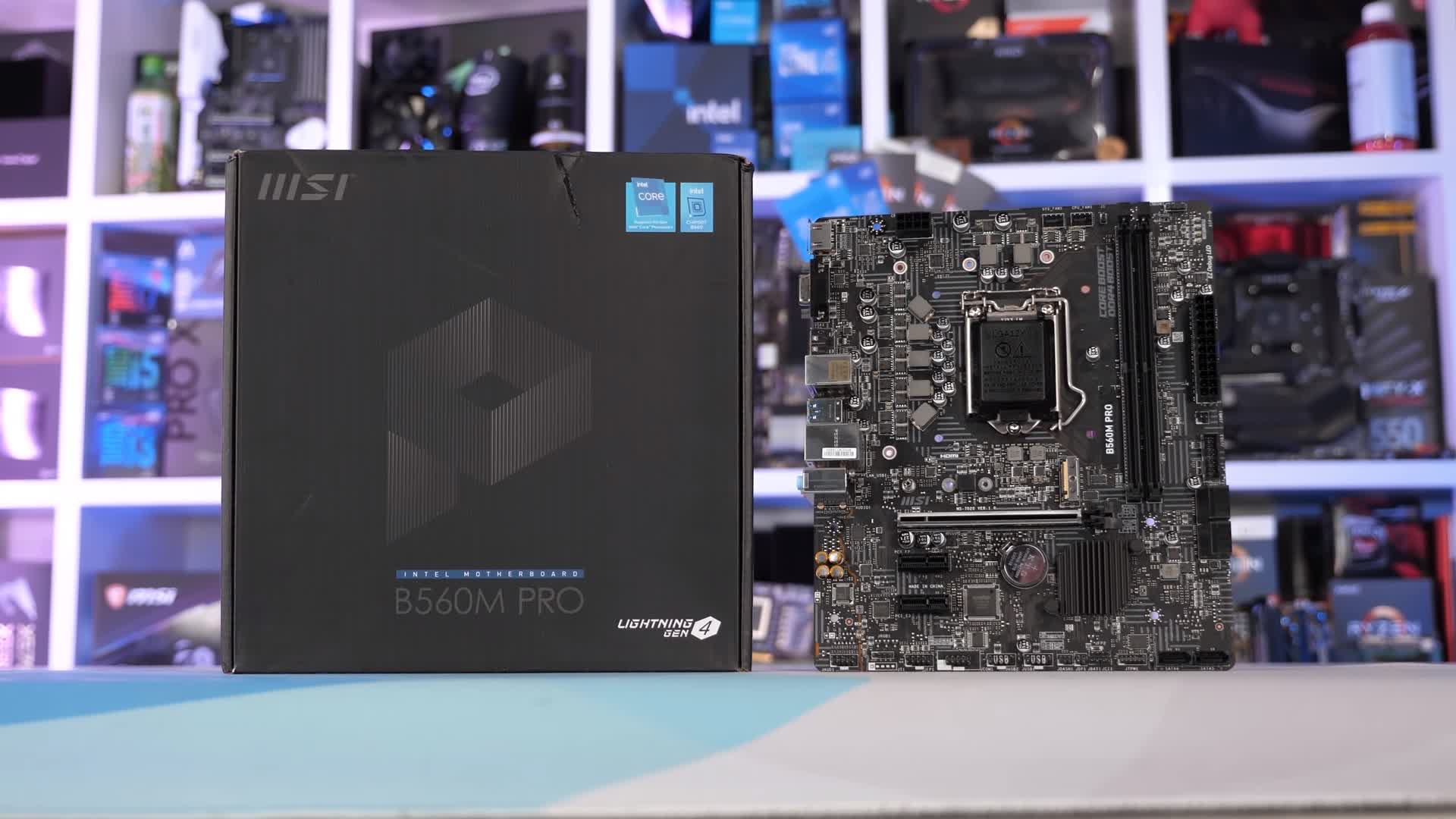
The Gigabyte B560M DS3H AC didn't avoid throttling either, though it only periodically dropped down to around 2 GHz, which is out of spec, and that meant the average frequency achieved was 4.1 GHz, or 300 MHz shy of the target. Interestingly, the Asrock B560 Pro4 didn't VRM throttle, but only managed 4.3 GHz with the power limits removed, though that's only a 100 MHz deficit.
The crazy part is that these boards all worked significantly better out of the box with the 125 watt Core i5-11600K, clocking no lower than 250 MHz below the 4.6 GHz all-core frequency. The reason is the higher TDP, 125w up from 65w, so there's little need to remove the power limits with a part like the 11600K, as you're only gaining around 200 MHz for heavy all-core workloads, less than a 4% drop in frequency.
Locking these boards to 125w seems like the way to go when using parts like the i7-11700, you won't get max performance, but you'll get very close while avoiding VRM throttling.
Bottom Line
We found out that if you're willing to do a little tinkering with the power limits, you can manually dial in most of these budget boards pretty well, but the point is that without some fairly knowledgeable user intervention, the platform is a total mess for builders.
The fact that out of the box performance can vary by up to 50% between B560 motherboards when using the same processor is insane. Let's clarify this is not a single motherboard manufacturer or a specific model screw up, this one's squarely on Intel.
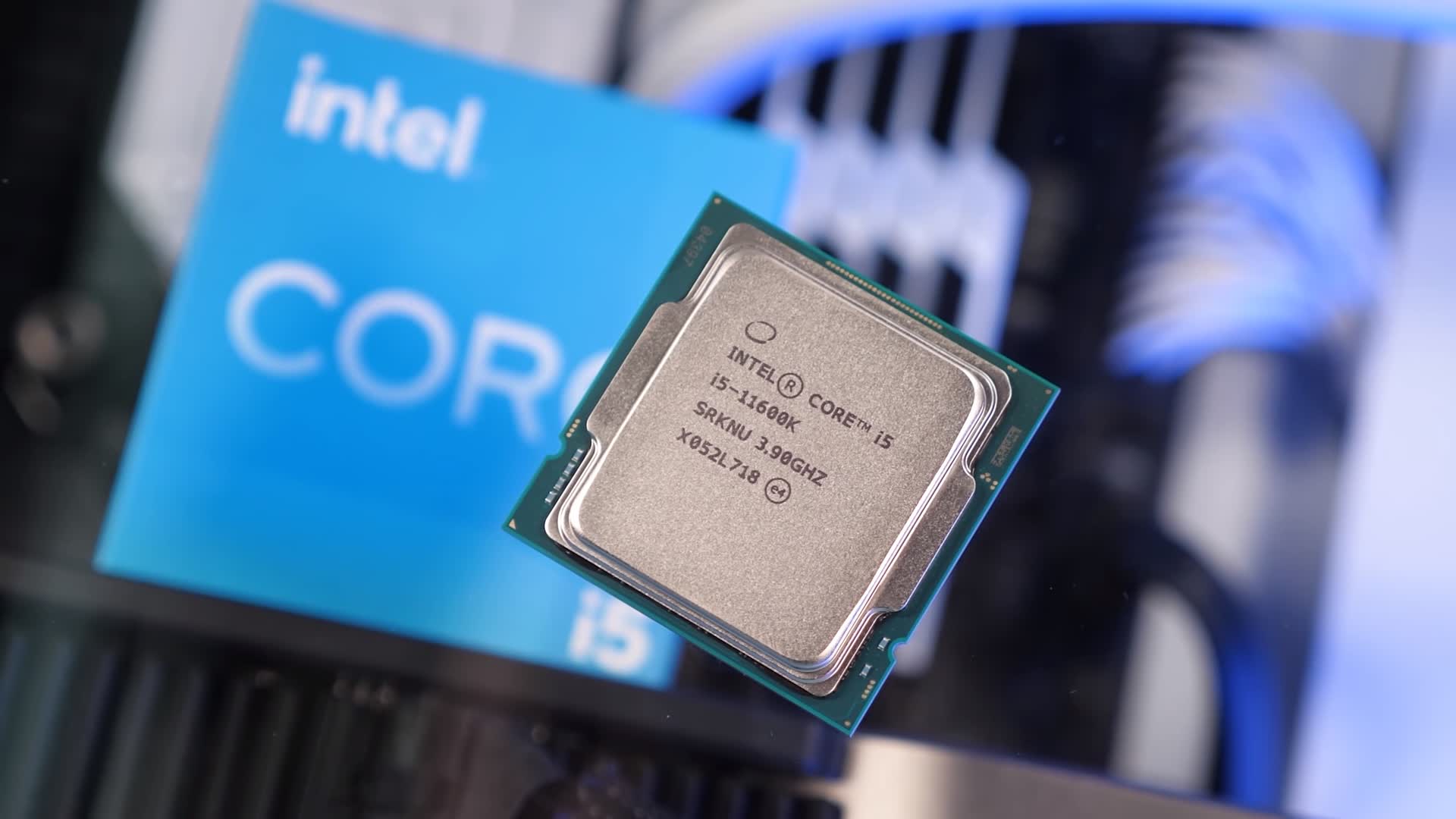
We could bash MSI for making the B560M Pro, and if we did we'd have to go after Asrock for the B560M-HDV, or Gigabyte for the B560M Power, or Asus for the B560M-P, all of those boards will suffer from the same issues and there's likely more. But technically all of these boards meet the Intel spec, the base spec or TDP spec as it's often referred to.
For their entry-level boards, each maker has ensured the VRM can handle the power requirements of the base spec, and that's about it. Essentially they're OEM motherboards, or rather should be OEM motherboards.
Intel 11th-gen Core i7 series
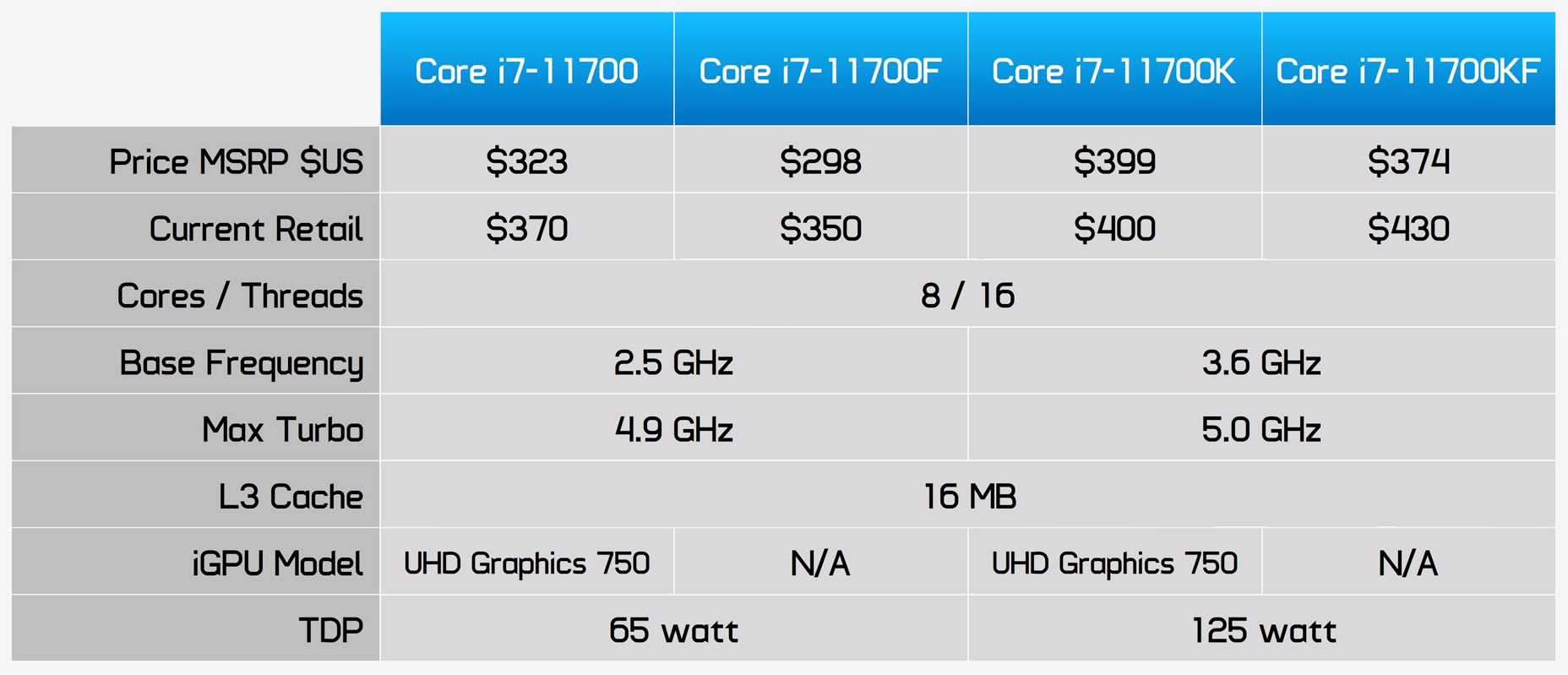
Even the MSI B560M Pro which clocks the i7-11700 as low as 2.9 GHz is within Intel's incredibly loosely defined spec. That's because the 11700 has an official base clock frequency of just 2.5 GHz, so as long as clocks don't drop below that, it's within spec. We only went out of spec with the power limits removed as this reduced the base clock under load to 800 MHz, with VRM throttling kicking in to save the board from thermal runaway.
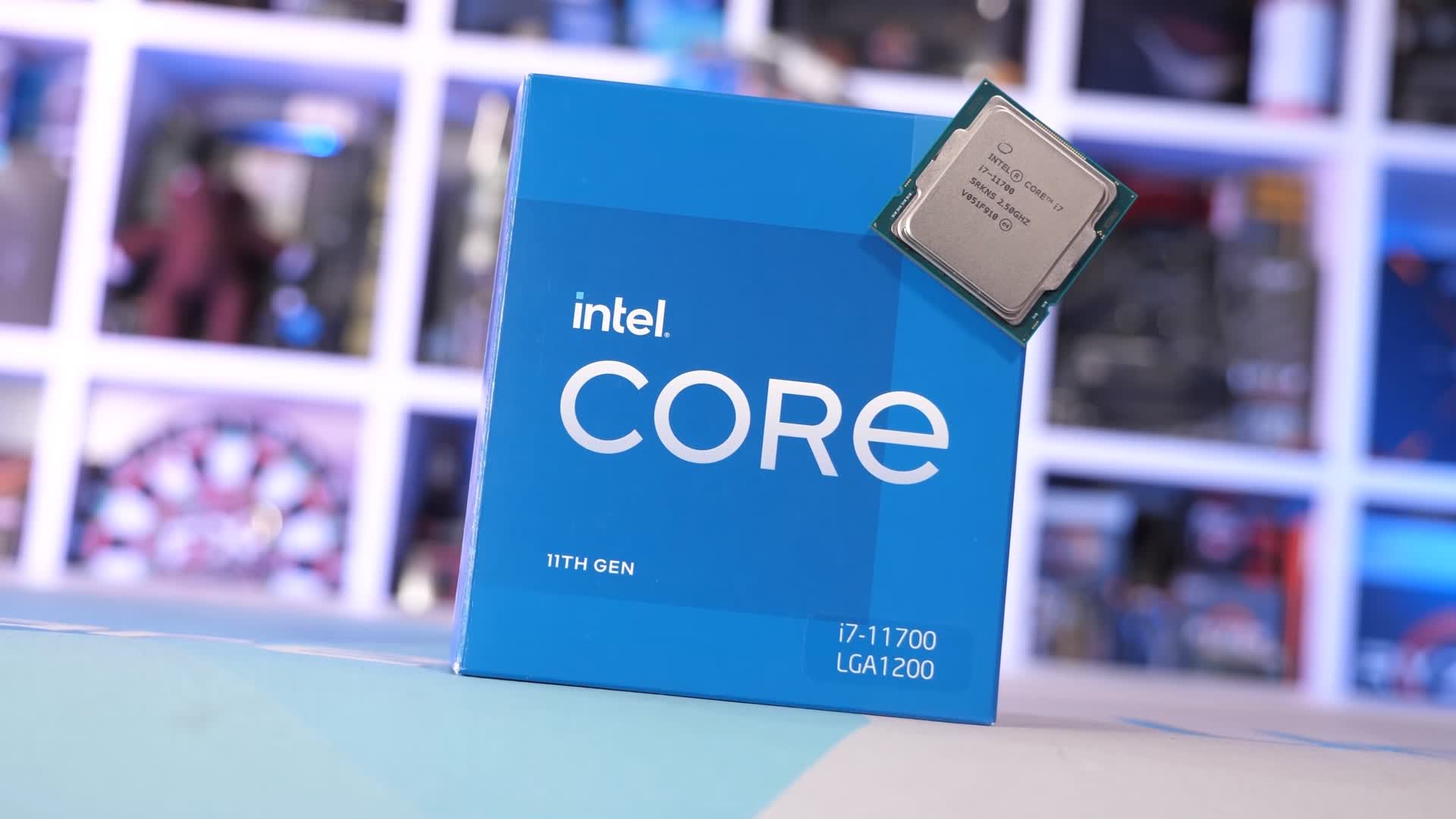
In the case of the Core i7-11700, we had boards that sustained load frequencies of 2.9 GHz right up to 4.4 GHz, and Intel will tell you all are running within spec. This has been caused by Intel's struggles to move on from their 14nm process. The loosely defined TDP spec wasn't an issue back in the Kaby Lake days when all Intel offered was a 4C/8T processor in their mainstream desktop lineup. But as they started to add more cores without major corrections to the TDP, we saw a gap between the base and boost clocks continue to widen.
For example, the 65w Core i7-7700 saw just a 17% disparity between its base and boost clocks, then with the 65w Core i7-8700 that figure increased to 44%, and now we're at a ludicrous 96% with the Core i7-11700.
Intel Core i7 series
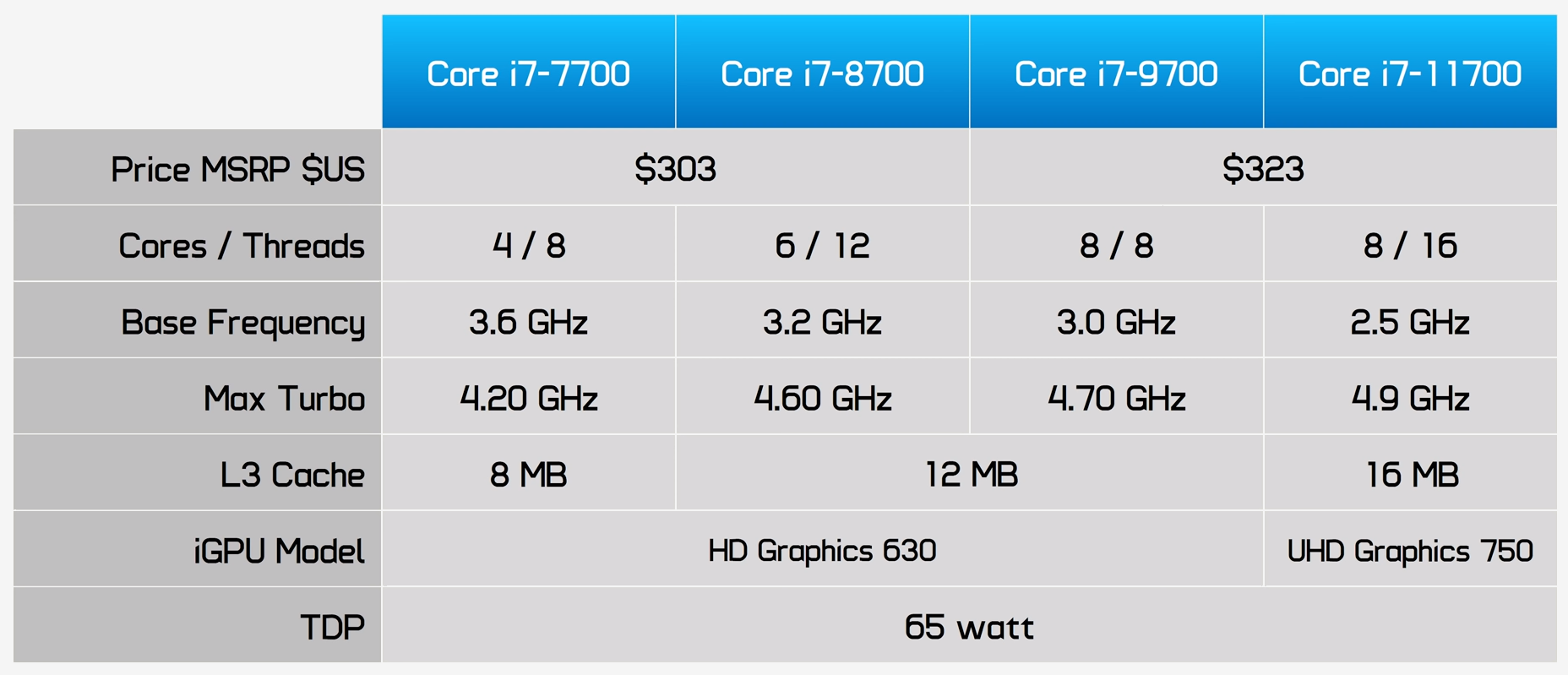
This is the situation we're faced with when recommending locked Intel CPUs on budget B560 motherboards. Moving forward, my job will be to work out just how little you can spend on a B560 motherboard and still achieve proper performance with parts like the Core i7-11700, ideally without having to manually fine-tune power limits.
Out of the box experience should be like the one offered by motherboards like the MSI B560 Tomahawk and Gigabyte B560M Aorus Pro, but without having to pay $200 for the privilege. Whether or not that's possible remains to be seen, but we plan to have some answers for you in an upcoming B560 VRM benchmark feature, which will cover many more boards. Until then, it's safer to avoid any sub-$140 Intel B560 motherboards.
Shopping Shortcuts:
- Intel Core i5-11600K on Amazon
- Intel Core i7-11700K on Amazon
- Intel Core i5-11400F on Amazon
- Intel B560 Motherboards on Amazon
- AMD Ryzen 5 5600X on Amazon
- AMD Ryzen 7 5800X on Amazon
(责任编辑:新闻中心)
-
Best smart home deals this week at Amazon
 Our top picks:Best smart entertainment dealRoku Streaming Stick 4K$34 at Amazon(save $15.99)Best sma
...[详细]
Our top picks:Best smart entertainment dealRoku Streaming Stick 4K$34 at Amazon(save $15.99)Best sma
...[详细]
-
 雅安日报讯 28日开始,市公安局交警支队直属一大队针对市区内车辆乱停乱放行为开展了集中整治,交警部门将以“清洁化、秩序化、优美化、制度化”为目标,依法对机动车乱停乱放行为进行纠正和处罚,进一步改善市
...[详细]
雅安日报讯 28日开始,市公安局交警支队直属一大队针对市区内车辆乱停乱放行为开展了集中整治,交警部门将以“清洁化、秩序化、优美化、制度化”为目标,依法对机动车乱停乱放行为进行纠正和处罚,进一步改善市
...[详细]
-
 雅安日报讯 12月4日,石棉县公安局交警大队挖角中队在开展交通违法行为集中整治行动中,查处了两起无牌、无证驾驶摩托车的严重违法行为,在对其违法行为依法进行严处的同时,还对违法人进行教育,提高他们的交
...[详细]
雅安日报讯 12月4日,石棉县公安局交警大队挖角中队在开展交通违法行为集中整治行动中,查处了两起无牌、无证驾驶摩托车的严重违法行为,在对其违法行为依法进行严处的同时,还对违法人进行教育,提高他们的交
...[详细]
-
 茶是高雅的,也是大众的,而泡茶、品茶则是一种自得其乐的心情。近日,市区某茶店店长高琴告诉记者,随着雅安茶文化的推广,越来越多的市民对泡茶、品茶产生了浓厚兴趣,经常到茶店来观察服务员泡茶,并希望能够学
...[详细]
茶是高雅的,也是大众的,而泡茶、品茶则是一种自得其乐的心情。近日,市区某茶店店长高琴告诉记者,随着雅安茶文化的推广,越来越多的市民对泡茶、品茶产生了浓厚兴趣,经常到茶店来观察服务员泡茶,并希望能够学
...[详细]
-
 Fiction
...[详细]
Fiction
...[详细]
-
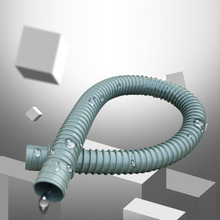 本报讯 昨17)日,记者从市公安消防支队获悉,今年大年三十(2月13日)到初三(2月16日),全市共发生10余起火灾,大部分是因为燃放烟花爆竹引起的。 除夕晚上,市区南四路49号大院一居民家阳台突然
...[详细]
本报讯 昨17)日,记者从市公安消防支队获悉,今年大年三十(2月13日)到初三(2月16日),全市共发生10余起火灾,大部分是因为燃放烟花爆竹引起的。 除夕晚上,市区南四路49号大院一居民家阳台突然
...[详细]
-
 气温越来越低,保暖产品也铺天盖地袭来。市民李莉胖胖的手指上长了几个冻疮,为了不让手指变得像“红萝卜”,她准备利用周末逛逛商店,买些保暖产品。 电热水袋、暖宝宝、打字戴USB手套、喝水用USB保温杯、U
...[详细]
气温越来越低,保暖产品也铺天盖地袭来。市民李莉胖胖的手指上长了几个冻疮,为了不让手指变得像“红萝卜”,她准备利用周末逛逛商店,买些保暖产品。 电热水袋、暖宝宝、打字戴USB手套、喝水用USB保温杯、U
...[详细]
-
 雅安日报讯 昨14)日,市政协党组书记、主席傅克勤主持召开市政协二届三十九次主席会议,会议协商决定,市政协二届十三次常委会议于12月22日—23日召开。 会议讨论并原则通过了市政协二届十三次常委会议
...[详细]
雅安日报讯 昨14)日,市政协党组书记、主席傅克勤主持召开市政协二届三十九次主席会议,会议协商决定,市政协二届十三次常委会议于12月22日—23日召开。 会议讨论并原则通过了市政协二届十三次常委会议
...[详细]
-
The local version of Project 2025 is already causing devastation.
 Project 2025, the Heritage Foundation’s toxic playbook for a second Trump administration, has so inf
...[详细]
Project 2025, the Heritage Foundation’s toxic playbook for a second Trump administration, has so inf
...[详细]
-
 “家电下乡”这一惠民政策,让广大农村消费者在用上新家电产品的同时,也享受到了国家的惠民政策。今年1月,财政部、商务部、工信部等联合发布通知,将12类下乡产品限价范围大幅提高,如彩电和手机的最高限价提
...[详细]
“家电下乡”这一惠民政策,让广大农村消费者在用上新家电产品的同时,也享受到了国家的惠民政策。今年1月,财政部、商务部、工信部等联合发布通知,将12类下乡产品限价范围大幅提高,如彩电和手机的最高限价提
...[详细]

 Alcaraz vs. Van de Zandschulp 2024 livestream: Watch US Open for free
Alcaraz vs. Van de Zandschulp 2024 livestream: Watch US Open for free 我市煤矿企业将建立安全生产诚信档案
我市煤矿企业将建立安全生产诚信档案 雅安茶产业:有喜有忧又一年
雅安茶产业:有喜有忧又一年 农用车下坡路上“跩花灯”
农用车下坡路上“跩花灯” The Composer Has No Clothes
The Composer Has No Clothes
